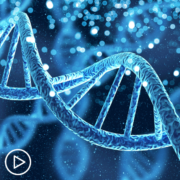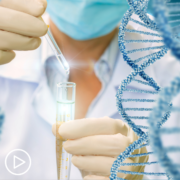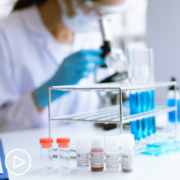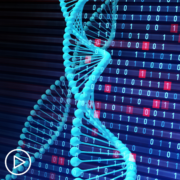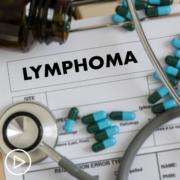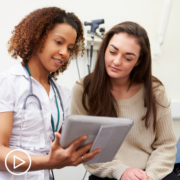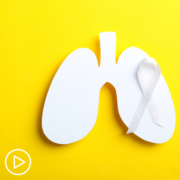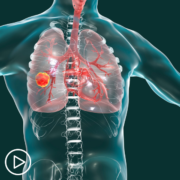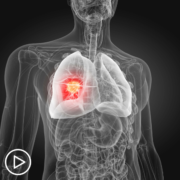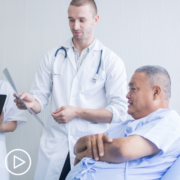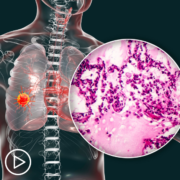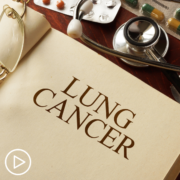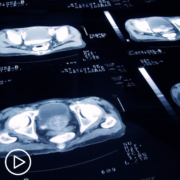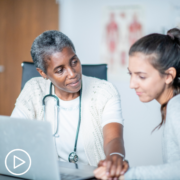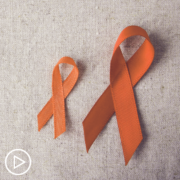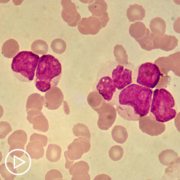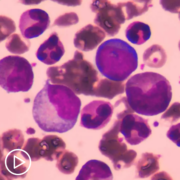Exploring Renal Cell Carcinoma Research: Expert Insights on Immunotherapy and Targeted Therapy from Patient Empowerment Network on Vimeo.
What’s important in renal cell carcinoma research news? Expert Dr. Moshe Ornstein from Cleveland Clinic shares an overview of research updates on immunotherapy, targeted therapy, and combination therapies.
Download Resource Guide
See More from START HERE Renal Cell Carcinoma (RCC)
Related Resources:
Transcript:
Lisa Hatfield:
Dr. Ornstein, can you speak to the latest news in renal cell carcinoma?
Dr. Moshe Ornstein:
So just by way of a 30,000 foot view, when it comes to renal cell carcinoma, approximately two-thirds of patients are diagnosed when the cancer is in a localized stage, where the cancer is treated with curative intent, generally with surgery. For patients who present with metastatic kidney cancer, in other words, kidney cancer that has spread beyond the kidney, or for patients who had their kidney removed and then developed a recurrence or the cancer had come back to the lungs or the bones or anywhere beyond the kidney, those patients are treated with what’s called systemic therapy. Those are medicines that really cover head to toe, not a specific area, but head to toe.
And when we think about treatment options in kidney cancer, there are two main treatment options. One is immunotherapy. Immunotherapy is generally what’s called checkpoint inhibitors. And these are therapies that “release the brakes” on the immune system, and allow the body’s immune system to be activated to target the cancer.
And the other type of medicine is called targeted therapies. And these for the most part, are vascular targeted therapies, and the way I describe it is they shrink the blood supply to the tumors. So again, you have those tumors that are diagnosed at a local stage. You have those tumors that are metastatic or advanced beyond the kidney. And the main treatment paradigms have to do with immunotherapy and targeted therapy.
So we just had the ASCO GU meeting, and I just want to describe the updates and how they fit into sort of the overall treatment paradigms across the different treatment sections, in other words, localized and metastatic. So for a patient who presents and comes in with just a kidney mass, that’s a kidney cancer, generally that patient’s going to be treated with surgery. In general, there’s no rule for therapy before surgery. For many years, for that patient who had their kidney cancer removed from the kidney, either part of the kidney or the whole kidney removed, we really didn’t know what to do with those patients, and the standard of care was just to watch those patients.
And we’ll get into a discussion about what watching the patient means. But one of the updates from the recent meetings has been that for patients who have their kidney removed because of kidney cancer, there is now a rule in some patients, this has to be a discussion with the doctor, to use immunotherapy to help prevent or delay the cancer from coming back. It’s a personal discussion.
We have a lot of data to support the use of a medicine called pembrolizumab (Keytruda), which is an immunotherapy that patients would get for a year after their kidney surgery. So that’s really the big recent update in the localized kidney cancer world, where the kidney cancer has been removed by surgery, and there’s now a treatment option, a year of immunotherapy after surgery for the right patient. So now, we move to the metastatic patient.
So again, the patient who has metastatic disease, either comes in with metastatic disease upfront, meaning the kidney’s there, the tumor’s in the kidney, and there’s advanced disease. And the other type is the patient who had their kidney removed a year ago, two years ago, sometimes five years ago, and now shows up with new spots in the lungs or the bones or elsewhere in the body. And that is metastatic or advanced kidney cancer.
So by and large, the overwhelming majority, and in my clinical practice, 95 percent of these patients are going to get an immunotherapy-based regimen as the first treatment for advanced kidney cancer. And there are different types of immunotherapy-based regimens. There’s an immunotherapy in combination with immunotherapy, and that’s called ipilimumab (Yervoy) and nivolumab (Opdivo), so double immunotherapy, or an immunotherapy plus a targeted therapy.
Lisa, we spoke about the targeted therapy, cutting the blood supply. So in addition to getting two immunotherapies, some patients won’t get two immunotherapies, they’ll get one immunotherapy in combination with a targeted therapy. And those combinations include axitinib (Inlyta) and pembrolizumab, lenvatinib (Lenvima) and pembrolizumab and cabozantinib (Cabometyx) and nivolumab as the primary combination treatments for the first line of therapy for metastatic kidney cancer.
And the real updates from the recent meetings in this setting is just that with additional follow-up, in other words, we’ve seen follow-up at two years after the trial started, three years, four years, now five years, we’re seeing that there’s a subset of patients that continue to benefit with this combination years down the road. So, encouraging for patients. Again, it’s not every patient, different patients need different things, but just the knowledge that we have long-term follow-up data for patients who have gotten an immunotherapy-based combination for the front-line treatment for their advanced kidney cancer.
And the last update I want to touch on is once we move beyond that first line of immunotherapy-based combinations, we really don’t know exactly what to do beyond that. Meaning, if somebody got an immunotherapy-based combination, and then the kidney cancer got worse, what do we give next? And generally, we’re giving more of these vascular inhibitors, these targeted therapies. And the latest advancement in this area, in the refractory setting, in other words post immunotherapy-based combination is the introduction of a new medicine called belzutifan (Welireg), which is not a classic vascular inhibitor, but is something called the HIF-2α inhibitor.
It’s a very well-tolerated therapy in many of the patients. And it does have activity in the right patient. And it’s now FDA-approved relatively recently for patients who have already had an immunotherapy-based combination. So that’s kind of the major update. The post-surgery treatment with immunotherapy, long-term data for immunotherapy-based combinations in the metastatic setting, and a novel therapy, a new mechanism of action with a pill with a therapy called belzutifan for patients whose kidney cancer is getting worse despite standard treatments upfront.
Share Your Feedback
Create your own user feedback survey

